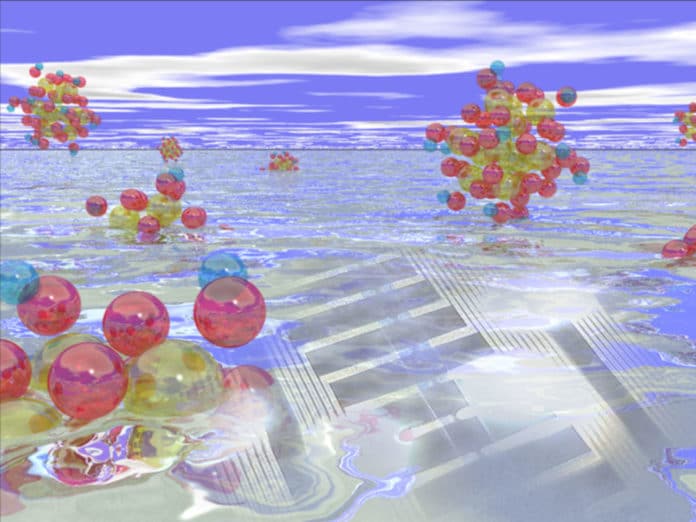The demand for computing is continuously growing, especially in Artificial Intelligence. In AI, several neural networks often run on multiple parameters.
Reservoir computing is the solution to such a problem. Unlike other traditional binary programs that run on semiconductor chips, the reservoir performs much of the calculation. From quantum processes to optical laser components, various nonlinear dynamical systems have been considered reservoirs.
In a new study, scientists from Osaka University, with colleagues from the University of Tokyo and Hokkaido University, have developed a simple system based on electrochemical reactions in Faradic current that could jump-start developments in this field.
Professor Megumi Akai-Kasaya, a lead author of the study, said, “Our simple testing device consists of 90 pairs of planar electrodes with an ionic solution dropped on its surface. The response voltage to the input voltage is then used as the response of the reservoir.”
“This voltage response is due to both the ionic currents that pass through the solution and the electrochemical current. This input-output relationship is both nonlinear and reproducible, making it suitable for reservoir computing use. A unique multiway data acquisition system on the device controls the readout nodes, enabling parallel testing.”
Using the device, scientists evaluated two liquids: polyoxometalate molecules in solution and deionized water. Their system shows a “feedforward connection” between nodes. However, there was a difference in samples.
Professor Akai-Kasaya said, “the polyoxometalate solution increased the diversity of the response current, which makes it good at predicting periodic signals. But it turns out that deionized water is best for solving second-order nonlinear problems.”
The device demonstrated exemplary performance. Scientists think it could be used for more complicated tasks, such as handwriting font recognition, isolated word recognition, and other classification tasks.
Scientists noted, “Proton or ion transfer with minimal electrochemical reactions over short durations has the potential for development as a more computationally powerful computing system that is low in cost and energy-efficient. The simplicity of the proposed system opens up exciting new opportunities for developing computing systems based on electrochemical ion reactions.”
Journal Reference:
- Shaohua Kan et al. Physical Implementation of Reservoir Computing through Electrochemical Reaction. DOI: 10.1002/advs.202104076
